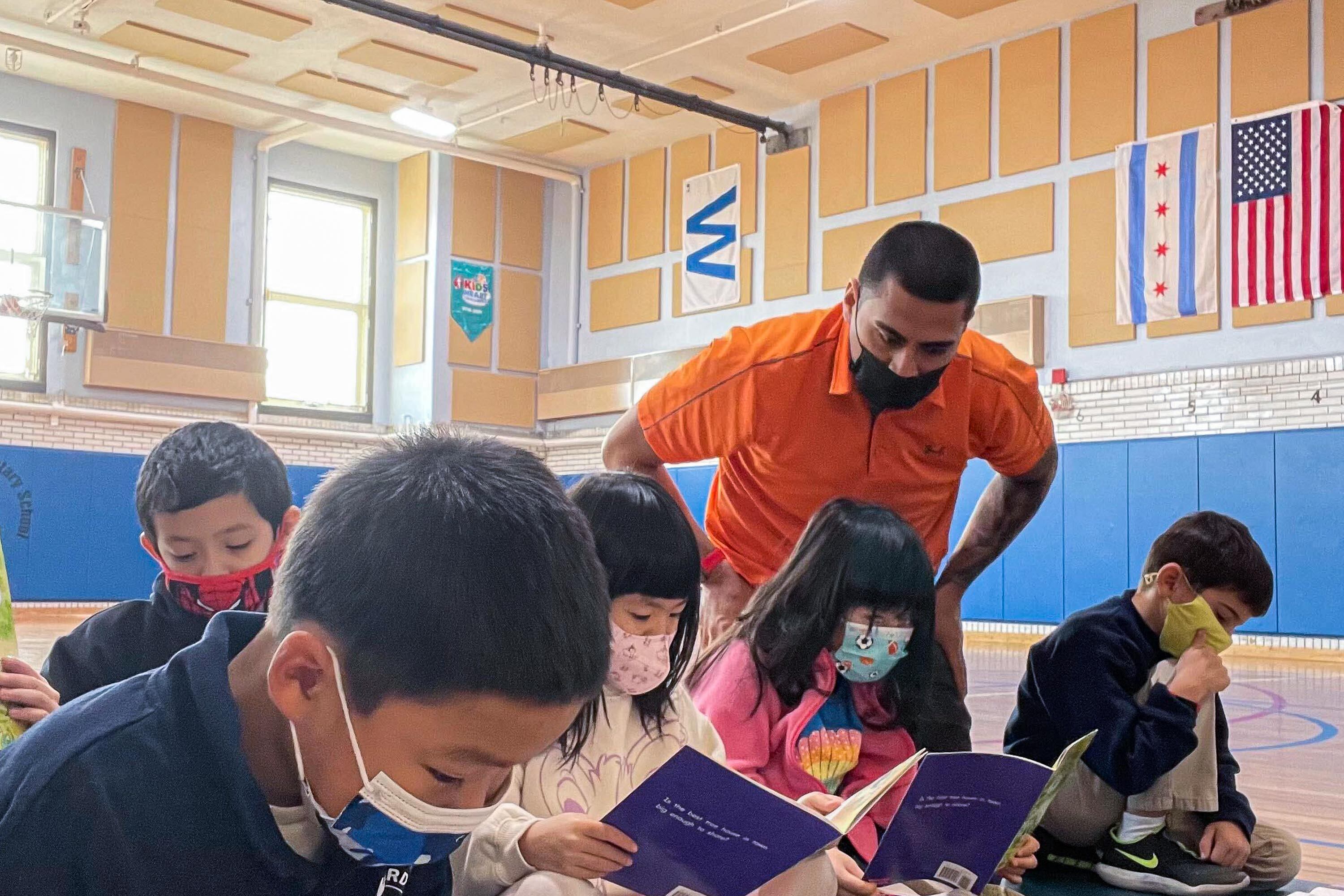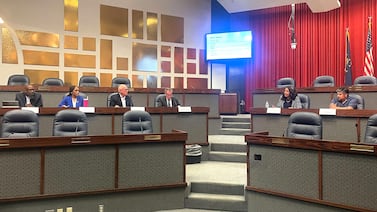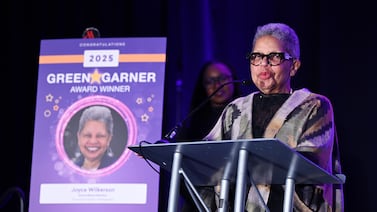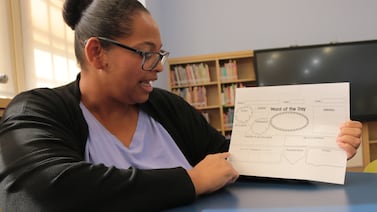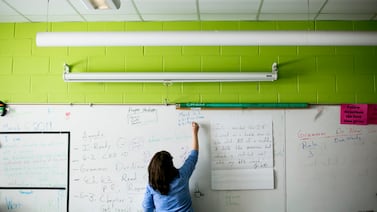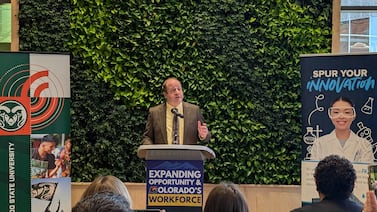Hector Rodriguez knew a return to in-person instruction would come with some challenges for many students, especially after 18 months of remote learning.
Before students walked into his class in late August, the James Ward Elementary physical education teacher made it his mission to create a safe and comforting environment after an extended period of uncertainty.
“I’m focused on making teaching fun again — bringing that joy back to in-person learning for our students,” Rodriguez said.
A few months into the school year, he is incorporating social-emotional learning into his physical education classes. Some of those activities include having students lead classmates in their favorite family dance like the Macarena or Cha Cha. Activities like these, Rodriguez says, allow students to share and be “creative and express themselves.” They “help improve the classroom climate and create a safe learning space.” Rodriguez has also been working with Cubs-affiliated charities to introduce baseball to students who have never played the sport. In 2019, Rodriguez received a Cubs Jr. All Stars physical education award for his work with the organization’s spring training program at the Chinatown school.
Rodriguez recently talked to Chalkbeat about being back in school, how his upbringing shaped him as a teacher, and the importance of being an educator of color.
This interview has been lightly edited for length and clarity.
What are you doing to meet your students’ needs following two disrupted school years and the trauma COVID brought with it?
This year, I’m focusing more on the social-emotional aspects of teaching. I want to create a safe space while also facilitating different team-building activities during and after school.
We have a running club and soccer program at James Ward school. I have a few students that are my leaders, my captains. They help with some of the leadership responsibilities, including taking attendance, leading warm-ups, and leading some of the planned activities. It’s really been helpful for social-emotional learning and development. The physical activity, combined with the kids interacting and socializing again, really helps them in other aspects of school learning.
What is something happening in the community right now that affects what goes on inside your classroom?
We are putting a big focus on equality and diversity. I think there are huge disparities in the community when it comes to equity. For example, the vaccination rates, food deserts, and things of that nature.
So when students come in here, we try to make sure that everyone has a voice, that everyone has an equal opportunity. And that’s a huge component of what we do here at our school. That means we make sure our students are being fed or get a snack during after-school programs. We teach them the golden rule: treat others how you want to be treated.
We also are creating a safe space for non-binary students to express themselves here. We want to offer that safe space for all of our students.
How has your own school experience impacted the way you teach today?
I grew up in Humboldt Park. My parents were immigrants who came from Mexico searching for a better life for their family. My father instilled in me a strong work ethic. He worked for a company painting homes, and my mother was a homemaker raising five children. We lived a humble life. We were very low-income. We lived in government housing.
My mom lost a battle to breast cancer when I was young. That experience really opened my eyes. I became somewhat troubled, but I had a lot of caring teachers in my life who really took time to genuinely show love, support, and mentorship. Here I am now because of some of those teachers. Being a Latino male teacher has allowed me to be a role model, of sorts, to some of my students. Just my presence as a male, Latino, minority in my position, allows them to feel like they can also achieve and do something great.
On top of teaching at James Ward, you coach Cubs Jr. All Stars during the school year and in the summer. What is that experience like?
Most kids love sports. I think sports are a great way to get them connected to one another and with the surrounding community. The Cubs baseball charities allow us to introduce baseball to our Bridgeport and Chinatown communities. Approximately 70% of our student population is of Asian American descent, and most of them have never seen or played a game of baseball. Some of our students have never swung a bat, wore a baseball glove, or played catch.
Cubs charities provide equipment, the curriculum, and professional development. They allow teachers, like myself, to collaborate and see what works, what doesn’t, and how to make it better. There is also a data component to have a skills-based assessment and make sure students are learning, and we’re meeting our objectives.
What’s the best advice you’ve ever received, and how have you put it into practice?
During a Zoom call, former Cubs coach Joe Maddon, who led the Cubs to the World Series, told me something very simple. He said: ‘Hector, it begins when it begins.’
It really resonated with me. It allowed me to say my intention, breathe my intention, and speak it to life. For me, that intention is: Make teaching fun and be a positive influence in my school community.
Another great lesson is from my dad, who told me: “Don’t take anything personal” and “just seize the moment.” Opportunities are ubiquitous, but moments are not.

